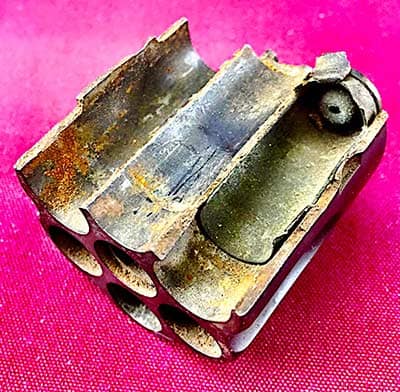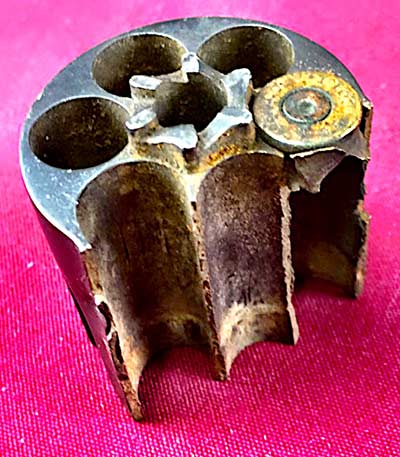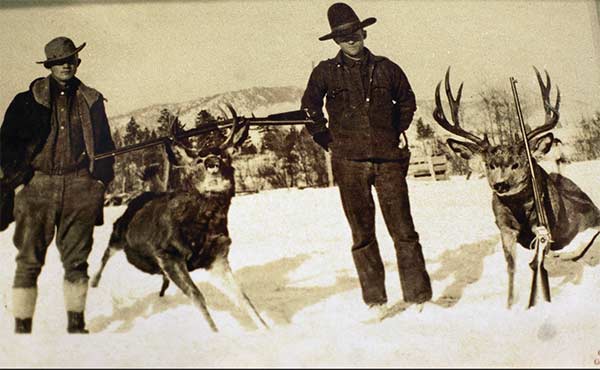Setting the Record Straight …
An Autopsy of Elmer’s Fateful Day
We’ve all heard the story of Elmer Keith blowing up his Colt SAA .45 that fateful morning celebrating Independence Day as a youngster. Each time the story is told, a slightly different rendition is shared. Not purposely, but simply due to human error/memory deficits and how each teller remembers it.
While digging through old American Rifleman magazines, I stumbled on the original article Elmer tells his tale to Chauncey Thomas, who was editor at the time. Here’s the story and findings in the words of Elmer and Chauncey Thomas. Hopefully, we’ll set the record straight on some of what happened that day and the days that followed.
It appears at least a couple of instances are combined, confusing readers as to the weight and type of bullet used when telling the tale. Also, further reading in Keith’s first book, “Sixgun Cartridges and Loads,” he admits to blowing up three different guns during his load development.
The book was written in response to Harold Croft wanting Keith to do so.
Independence Day
“I started to celebrate the morning of the Fourth. Picked up an old .45 S.A. Army 5 1/2 inch loaded with 40 grains bulk by my Ideal measure and 258 grain Ideal bullet, stepped out on an upstairs porch and turned the old gun at a 45 degree angle and started shooting. When the gun rose from recoil of my first cartridge I unconsciously hooked my thumb over the hammer spur and thus cocked gun as it recovered from the recoil. When I turned the next one loose I was almost deafened by the report and saw a little flash of flame. My hand automatically cocked gun and snapped again but no report. I stopped then knowing that something was wrong. The upper half of three chambers was gone. Also one cartridge and half of another case. Also the top strap over cylinder. My ears were ringing otherwise I was all O.K.”
Keith goes on to explain how he recovers the gun parts and plans on sending them to Chauncey Thomas, as well as some of his loads, so “brother six-gun users can profit from my experience.” He also states he shot the gun 10 times the previous day at sparrows, owls, and little hawks without a miss, describing the gun as the” most accurate SAA I’ve ever owned.”
The load consisted of an unknown powder Elmer assumed was F.F.G. black powder and used 40 grains from an Ideal measure. Winchester No. 3W primers were used.
Keith shows his sense of humor, stating,” Also wish to ‘thank Allah’ as C.T. says, I did not sprout wings or get an everlasting job of heaving coal for blowing up a S.A. Colt.”
Chauncey Responds
Chauncey cuts to the chase in his response, sparing little restraint, stating, “It is a plain case of an oversized bullet being driven out of an undersized cylinder hole by an overcharge of powder, all due to heap bad reloading and Mr. Keith’s own fault.” He goes on to say the bullet is far too soft for any revolver.
Chauncey reports, “Here are the ‘disgusting details’ Caliber of bullet average about .458” and weight about 259 grains with grease. Mixture of metal, very soft. Far too soft for any revolver in full load. Cylinder opening is .452” (This is too small even for factory loads).”
Powder
“Weight of powder, as sent to me, 32 grains. Powder sifted into three grades, equals 23 grains F.F.G., 2 grains about F.F.F.G. and 5 grains nearly as fine as talcum powder or wheat flour. Its floured condition indicates it was compressed heavily in the shell, or that friction in the can has floured it considerably.”
Round Two?
In another incident, Thomas explains how Elmer blew up another gun shooting 300-grain bullets sized .457”. “Several years ago, I warned Keith about this very thing of using No. 80 rifle powder in pistol cases. Keith was shooting .45-90 bullets weighing 300 grains and sized .457”. He came near killing himself then. This time, he got only blood poisoning. If he does not reform, he will get sooner or later a permanent case of lead poisoning, or his searching friends will pick him up with a blotting paper. I publish this with his consent.”
Final Word
Although Chauncey appeared rough or harsh with Keith, he obviously saw something in the youngster. We can all be thankful for that. Chauncey went on to publish several more articles, eventually hiring Keith as a staff writer for American Rifleman. The rest, as they say, is history. Sixgunners should all be thankful for Keith pushing the limits of sixgun load development so we didn’t have to. He was a true pioneer. His work was the basis for the .357, .41 and .44 Magnums, as well as the .338 Winchester Magnum and the Model 70 pre-64 Winchester. Keith always strived to improve what was handily available during his day.








